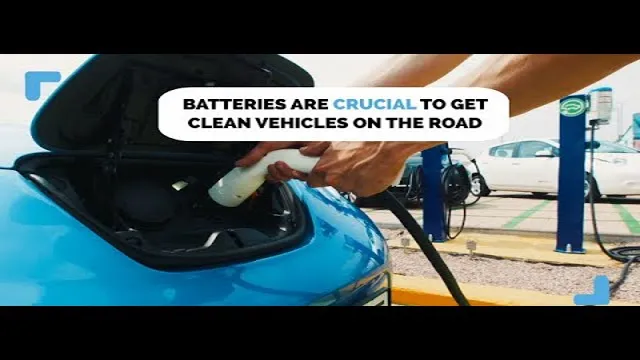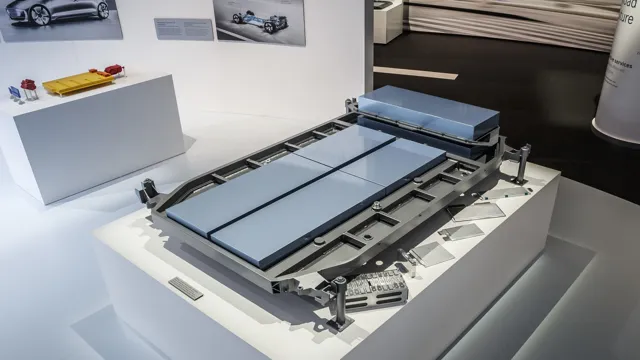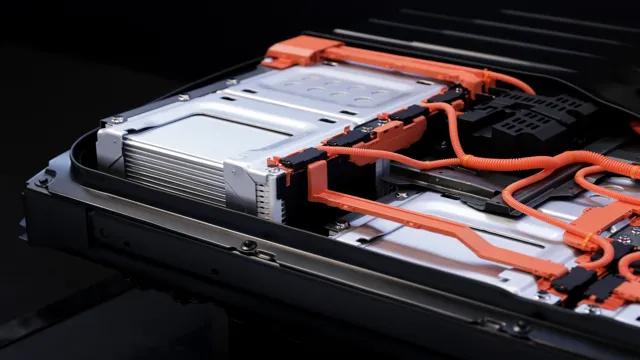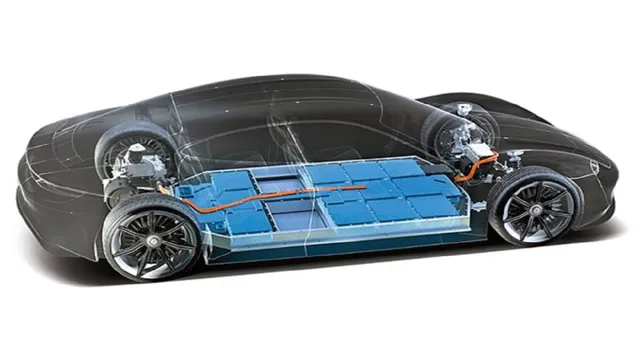Shocking Truth: The Dark Side of Electric Car Batteries You Need to Know
Electric vehicles (EVs) are often touted as the future of mobility, with their eco-friendliness and potential to reduce carbon emissions. However, the dark side of EV batteries has been gaining attention, highlighting the negative impact they have on the environment. While these batteries offer a range of benefits, they also present some alarming challenges.
From the sourcing of raw materials to the disposal of used batteries, there are several environmental and ethical considerations to take into account. In this blog post, we will explore the dark side of EV batteries, shedding light on the key concerns and discussing why they matter. Are EV batteries really as clean and green as they seem? Let’s find out.
Battery degradation & range anxiety
One of the bad things about electric car batteries is battery degradation, which is the gradual loss of battery capacity over time. As a result, the range of an electric car may decrease after several years of use, causing range anxiety among owners. This can be especially concerning for those with longer commutes or who depend on their electric car for long trips.
While battery technology is improving and some newer electric cars can go hundreds of miles on a single charge, owners of older models may need to factor in the possibility of reduced range when planning their travel. It’s worth noting, however, that many electric cars come with warranties that cover battery replacement or repair in case of early or excessive degradation.
Lack of charging infrastructure
One major challenge in transitioning to electric vehicles is the lack of a reliable charging infrastructure. This can cause battery degradation and range anxiety for EV owners. Since electric cars are powered by a battery, the battery’s health is critical to the car’s performance.
If the battery constantly dies and has to be recharged, it can lead to faster degradation. This is where the lack of reliable charging infrastructure comes into play. EV owners will have to plan their trips carefully and ensure that they are close to charging stations when driving.
Additionally, they will have to wait for hours to fully charge their battery, which can be inconvenient for many. This is where the analogy of a smartphone battery charging comes in handy. Just like how we charge our smartphones overnight to use them the next day, EV owners will have to plan to charge their vehicles for several hours to ensure sufficient range.
While the lack of charging infrastructure may seem daunting, it is essential to remember that this is a transitional phase, and with time, the infrastructure will evolve to meet the needs of EV owners.
Environmental concerns
Battery degradation and range anxiety have been two major concerns for electric vehicle owners and environmentalists alike. As an electric car battery ages, it inevitably loses some of its capacity, or its ability to hold a charge. This can shorten the distance that an electric vehicle can travel on a single charge, leading to range anxiety, or the fear of not being able to reach a desired destination.
Not only is this stressful for drivers, but it also limits the potential of electric vehicles as a viable alternative to traditional gasoline-powered cars. However, this issue can be mitigated through regular maintenance and proper charging practices. It is also important to note that while battery degradation is a concern, electric vehicles still have a significantly lower environmental impact compared to traditional vehicles.
By using renewable energy sources to power their cars, electric vehicle owners can significantly reduce their carbon footprint and contribute to a more sustainable future.
Safety concerns with lithium-ion batteries
While electric cars have been praised for their eco-friendliness and efficiency, there are some concerns regarding the safety of their batteries. Lithium-ion batteries are commonly used in electric cars, but if damaged or improperly handled, they can pose serious safety risks such as thermal runaway, where the battery can catch fire or even explode. Additionally, these batteries can potentially release toxic chemicals and greenhouse gases if not disposed of properly.
While measures have been taken to ensure the safety of electric car batteries, such as temperature sensors to prevent overheating, it is important for drivers to be aware of the potential risks and practice proper maintenance and handling to mitigate any danger. While electric cars have significant benefits for the environment, it is vital to consider the potential hazards associated with their batteries and take all necessary precautions.
Risk of fire & explosion
Lithium-ion batteries have become increasingly popular due to their versatility and high performance, but they also come with some safety concerns. One of the biggest risks associated with these batteries is the potential for fire and explosion. This is due to their high energy density, which means they store a lot of energy in a small volume.
If the battery becomes damaged or overheats, it can lead to a thermal runaway reaction where heat builds up, leading to an eruption of flammable gases that can ignite. This can occur during charging or discharging, or even when the battery is sitting idle. To mitigate this risk, it’s important to handle lithium-ion batteries with care, avoid overcharging or discharging them too quickly, and store them in a cool, dry place away from sources of heat and moisture.
Overall, while lithium-ion batteries can offer many benefits, it’s essential to be aware of the potential dangers and take steps to ensure safe usage.
Potential for thermal runaway
Lithium-ion batteries have revolutionized the way we function in our daily lives. From our smartphones to electric vehicles, these batteries have made our lives easier. However, with great power comes great responsibility, and lithium-ion batteries are not exempt from it.
One of the major safety concerns associated with these batteries is the potential for thermal runaway. Thermal runaway occurs when a lithium-ion battery becomes too hot and, instead of cooling down, continues to heat up, leading to an explosive reaction that can cause a fire or explosion. Imagine a pot of boiling water on a stove – once the temperature rises to a certain point, the water begins to boil over, causing a mess.
Similarly, thermal runaway can happen when the battery gets too hot, causing an explosion or fire. This is why proper safety measures and precautions should always be taken while handling and storing lithium-ion batteries.
Recycling challenges & toxic waste
When it comes to recycling lithium-ion batteries, there are significant safety concerns to consider. Lithium-ion batteries are used in a wide range of products, such as smartphones, laptops, electric vehicles, and even airplanes. If not properly disposed of or recycled, these batteries can pose a risk to both the environment and humans.
These batteries contain toxic and flammable materials such as lithium, cobalt, and nickel, which can release dangerous gases and pollute the soil and water if not disposed of correctly. Moreover, improper handling of these batteries can lead to fires and explosions, putting the safety of people and property at risk. That’s why it’s essential to recycle lithium-ion batteries at certified facilities that adhere to strict safety standards and take appropriate precautions to prevent any harm.
By doing so, we can ensure both the safety of individuals and the protection of our environment.
Limited battery lifespan & replacement costs
When it comes to electric cars, one of the main drawbacks is the battery lifespan. Although electric cars are cost-effective and eco-friendly, the batteries have a limited lifespan and eventually need to be replaced. The cost of battery replacement can be expensive, which can be a major drawback for those who are on a tight budget.
Moreover, the production process for the batteries is energy-intensive and can have a high carbon footprint. Additionally, the recycling of used batteries can be complicated and costly. As batteries degrade over time, it can also lead to a decrease in the mileage and overall performance of the electric car.
Therefore, it is important to consider the battery lifespan and replacement costs before investing in an electric car. However, improving technology and innovation in battery technology continues to provide hope for a future in which electric cars become more affordable and sustainable.
Costly battery replacement
One of the biggest concerns for users of rechargeable batteries is their lifespan and the cost associated with replacing them. Unfortunately, all rechargeable batteries have a limited lifespan. Over time, the battery may become less efficient, which can lead to a shorter runtime and a need for more frequent charging.
When the battery reaches the end of its lifespan, it will need to be replaced. This can be a costly endeavor, particularly for high-end devices that use specialized batteries. For example, replacing the battery in an iPhone can cost upwards of $100.
To ensure your battery lasts as long as possible, it’s important to take good care of it. Avoid exposing it to extreme temperatures, and try to keep it at about 50% charged when not in use. By following these tips and taking good care of your battery, you can prolong its lifespan and minimize the need for expensive replacements.
Short lifespan compared to gas cars
One of the biggest concerns people have when it comes to buying an electric car is its battery lifespan. Unlike gas cars that can last decades, electric vehicles are relatively new and still being improved. The truth is that batteries used in electric cars have a limited lifespan, and eventually, they will need to be replaced.
The cost of replacing a car battery can be quite high and may vary depending on the make and model of your vehicle. However, some car manufacturers are addressing this issue by offering battery replacement programs or leasing options that can make it more affordable to maintain an electric vehicle. Additionally, taking good care of your car’s battery can help extend its lifespan.
Avoid exposing it to extreme temperatures and avoid rapid charging and discharging as much as possible. Overall, while the lifespan of an electric car battery is shorter than that of a gas car, advances in technology and more accessible replacement options are making electric vehicles a more practical choice for everyday use.
Conclusion: Electric cars have some drawbacks
In the end, it seems that even electric car batteries, with all their perks and potential benefits for the environment, come with a few downsides. They can be heavy, expensive, and perhaps even less eco-friendly than we once thought. But just like any other technology, it’s all about finding the right balance – one that prioritizes sustainability without sacrificing efficiency or affordability.
So, when it comes to electric car batteries, let’s keep an eye on the bad, but focus on the good, and work towards a future that is truly green and sustainable. After all, as the old saying goes, every rose has its thorns – but that doesn’t mean we should stop appreciating the beauty.”
FAQs
What are some disadvantages of electric car batteries?
Electric car batteries can be expensive to replace and may have limited range.
Do electric car batteries have a shorter lifespan than traditional car batteries?
Yes, electric car batteries tend to have a shorter lifespan and may need to be replaced more frequently.
Are electric car batteries bad for the environment?
While electric cars produce zero emissions during use, the manufacturing and disposal of their batteries can have negative environmental impacts.
How do extreme temperatures affect electric car batteries?
Extreme temperatures, both hot and cold, can negatively impact the performance and lifespan of electric car batteries.





